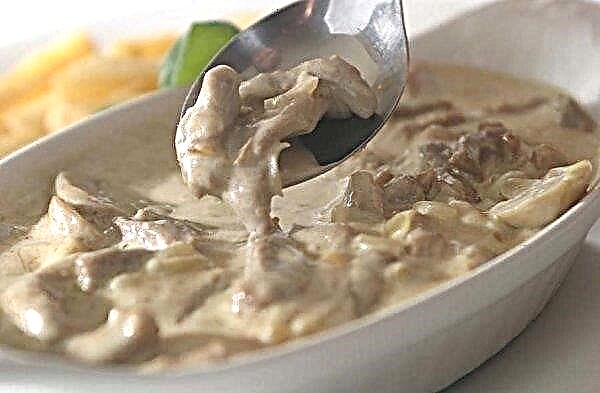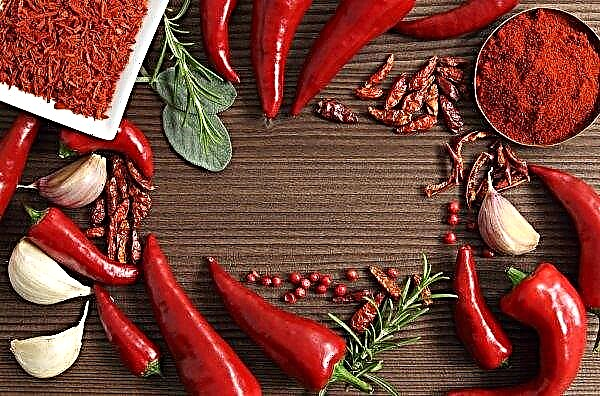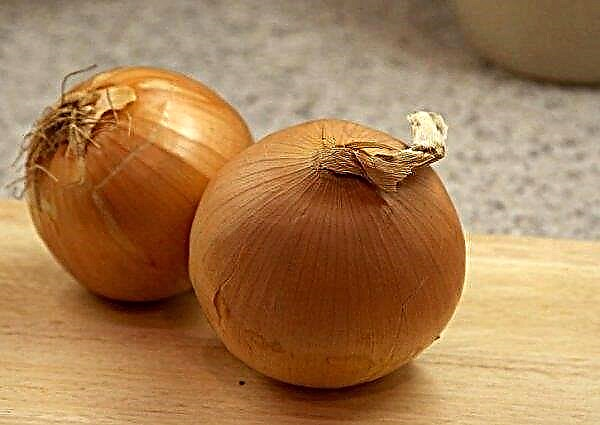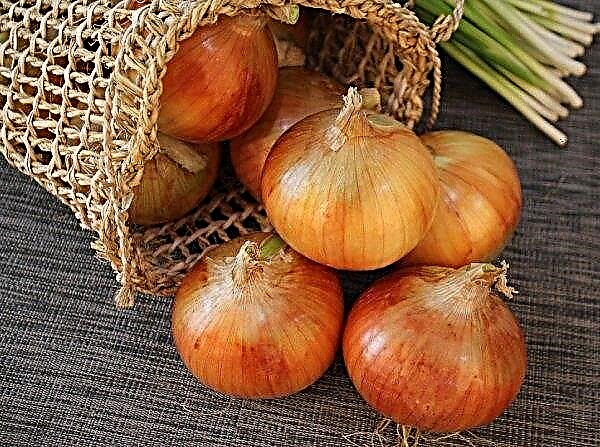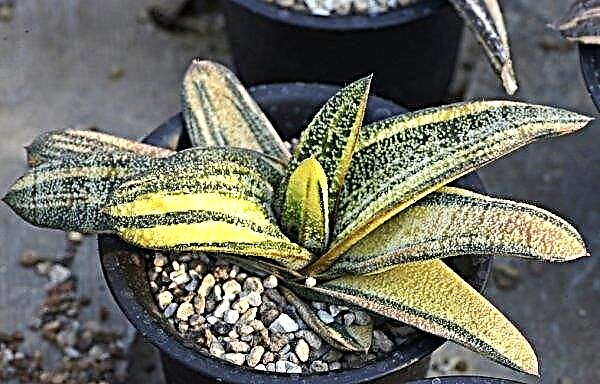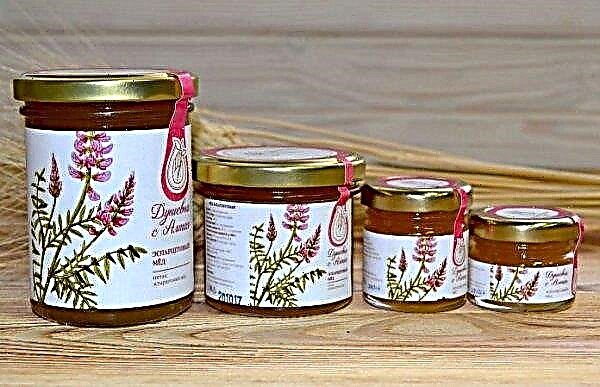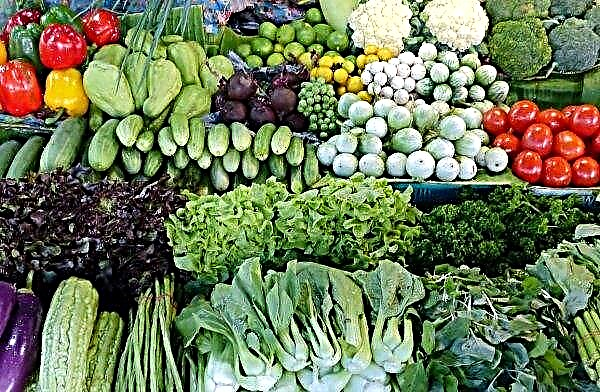Cabbage is rich in valuable vitamins and minerals, as well as all kinds of nutrients. But despite its benefits, in some diseases this valuable vegetable can adversely affect the state of the body, as well as provoke an exacerbation of serious pathological processes. Next, the main properties and composition of this vegetable crop, as well as its benefits and harm to the body in diabetes, will be examined in detail.
Chemical composition
The main wealth of cabbage is a whole complex of all kinds of vitamins, among which the vitamins of groups B, C, E, H, K, PP, U are the most concentrated. The vegetable also has a rather high concentration of ascorbic, pantothenic, folic and nicotinic acids, as well as thiamine, riboflavin and carotene.
Did you know? For the first time, cabbage was cultivated in North Africa and the Mediterranean about 4 thousand years ago. However, in addition to food purposes, the culture was widely used as a universal medicinal plant.
Contained in the composition of the vegetable and a large number of minerals:
- potassium;
- calcium;
- sodium;
- magnesium;
- phosphorus;
- iron;
- molybdenum;
- vanadium;
- nickel, etc.
Nutrition value of 100 g of cabbage:
- calorie content - 30 kcal;
- proteins - 1-2 g;
- fats - 0.1 g;
- carbohydrates - 4–5 g;
- dietary fiber - about 2 g;
- starch - 0.1-0.2 g;
- organic acids - 0.2-0.3 g;
- ash - 0.7–1 g;
- saccharides - 4–5 g;
- water - about 90 g.
Cabbage properties
The main beneficial properties of a vegetable for the body are explained by its rich vitamin and mineral composition. However, each type of vegetable has its own positive qualities that affect the health of diabetics in a special way.

Benefit
The main benefits of the most popular types of cabbage with high sugar are presented in the table:
| Title | Benefit |
| White-headed | Vegetable is one of the best sources of vitamin C. This compound enhances immunity, and also helps protect and restore the circulatory system after damage due to diabetes. |
| Beijing | Due to the high amount of lysine, with daily use, the fetus makes it possible to cleanse blood vessels and blood, as well as increase the body's resistance to adverse factors. Especially useful for type 1 diabetes |
| Color | This variety has a high content of amino acids, and is also characterized by instant digestibility without increasing blood sugar. Due to its special biologically active composition, the fetus lowers blood cholesterol and is also able to restore protein metabolism, therefore it is an indispensable product for diabetes of both type 1 and type 2 |
| Marine | Helps to reduce inflammatory processes in the body, and also favorably affects health in case of impaired renal or visual organs. Due to the high concentration of manganese, it improves blood flow in the brain |
Useful for diabetics and all kinds of cabbage dishes. Sour fruit helps to activate immunity and maintain the body during seasonal diseases. Such a meal with moderate consumption helps to lower blood sugar.
Did you know? Cabbage is one of the few vegetables used for decorative purposes. Some of its species are widely used for landscaping summer cottages in Australia, the USA and Europe.
Stewed cabbage in the process of cooking takes on a more delicate structure, which is important for diabetics. Such a vegetable is the least irritating to the digestive system and, during the heat treatment, becomes a low-carb food. Thanks to this, the dish can be used with confidence in diabetes of any complexity, without fear for health.
Harm and contraindications
Despite the great benefits to the body, a vegetable can cause serious harm to the health of a person suffering from diabetes.

- When overeating, it can cause:
- nausea
- severity in the stomach;
- bloating;
- flatulence;
- heartburn.
Features of the choice of cabbage
Cabbage is a common and inexpensive food product, however, acquiring a quality fruit is not so simple. A vegetable is considered one of the most perishable, and if storage conditions are not observed, it can become unfit for consumption in just a few days.
Important! Do not choose excessively large fruits, this often indicates the intensive use of chemical fertilizers, the remains of which can accumulate in the vegetable.
To choose a quality fruit, you must definitely pay attention to the following:
- head density - a quality fruit is always quite dense, it is difficult to separate into separate parts;
- leaves - they should be elastic, but soft and gentle to the touch;
- stitch length - its optimal size should not exceed 3-5 cm;
- leaf integrity - they must not be damaged by rot, pests or other defects;
- weight - a good vegetable is always weighty;
- Colour - the leaves should be bright shades, with a characteristic glossy sheen;
- humidity - the vegetable should be moderately moist, in other cases, we can say that it was stored in inappropriate conditions.
Consumption rates
Cabbage and all kinds of dishes based on it belong to those foods that practically do not need to be controlled for diabetes. The vegetable practically does not contain carbohydrates, which makes it absolutely safe for daily use.  That is why a high-vitamin, balanced diet for diet is often based on it. At the same time, it is not worth abusing a vegetable; for one meal, it is recommended to eat no more than 150-200 g.
That is why a high-vitamin, balanced diet for diet is often based on it. At the same time, it is not worth abusing a vegetable; for one meal, it is recommended to eat no more than 150-200 g.
How to cook cabbage
The most useful cabbage is fresh, since all kinds of high-temperature treatments dramatically reduce the amount of valuable vitamins and other compounds in it. It is finely chopped and used as the main or additional component of a fresh salad. Dress these dishes with a small amount of vegetable oil.

Special attention should be paid to sauerkraut, which is prepared by fermenting the chopped vegetable without any additives for a week. After that, the vegetable is put in a cool place and consumed for no more than 1-2 weeks. After this period, the product becomes excessively saturated and acidic for the stomach.
Important! It is forbidden to enrich stewed cabbage with all kinds of hot spices and spices. They irritate the digestive tract and pancreas, which complicates the course of diabetes.
Cabbage for diabetes is the safe foundation that helps create a good and balanced diet. Besides the fact that the vegetable practically does not contain carbohydrates, it contains many valuable vitamins, minerals and amino acids that help restore and support the body of a person suffering from diabetes. This is the main value of the product for this disease.

